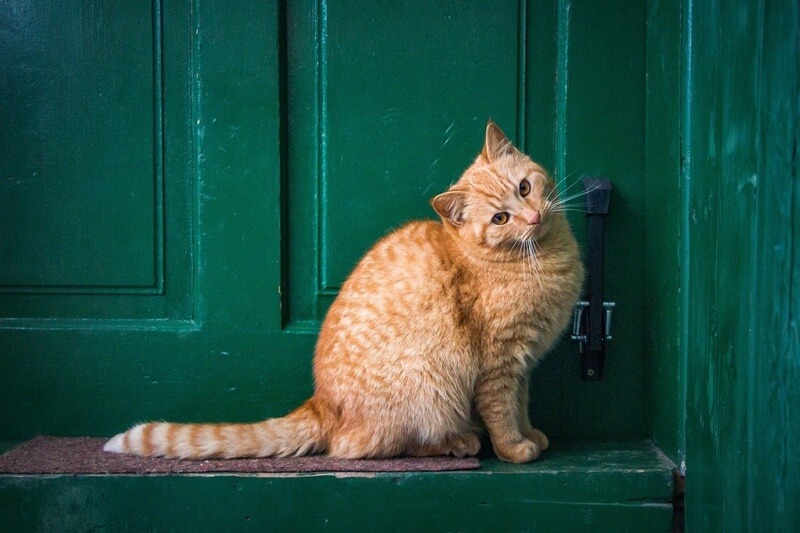The process of introducing a new cat to your household can be stressful, especially if you don’t know what you’re doing. In this article, we’re going to provide you with a comprehensive step-by-step guide in order to introduce your newest furry friend into the household.

Whether you’re introducing the first cat you’ve ever had into your home or you’re introducing a new cat into a home that already has pets, it’s important to know that patience is required.
Nothing great can happen overnight, a new cat’s adjustment into the home will require adjustments from you as well, so just focus on making gradual progress.
Considerations if you Already Have Pets in the Home
Cats are very territorial animals, if you already have cats or dogs they are likely to view this newcomer as a threat. Conversely, your new cat is coming into a new and unfamiliar environment and is likely to be on high alert which can make for a bad combination. The slower the process of introducing the animals is, the better your chances at success. Although this task may feel tedious at times, the timing is up to your pets, not you. Introductions may take days, weeks, or even months, the tempo will be up to your cat. Rushing the process will only make your animals fear or dislike each other in the long run.
Step-By-Step Process
Step 1: Before You Bring Your Cat Home
Instead of trying to get your cat used to the home as a whole, it will be simpler to get them settled into a single room to begin with. Establish one room in the house as a safe room for your cat. The room you choose shouldn’t be busy if possible and they should be allowed to come in and out as they please. Place a comfortable bed in the room as well as their food, water, and everything they need in the space. Giving your cat its own space to escape to if it gets stressed in the main house will help them get used to your home in doses.
Escape Proof the Home
While you may love your new cat the second you lay eyes on them, they may still be timid and shy toward you and attempt to escape your home. Doors and windows that are even the smallest bit open provide the perfect escape for your new furry friend. All members of your household need to be a part of this process especially during the first few days and weeks of introducing your cat. Windows and doors should be securely closed and members of the house should be aware when opening doors and windows that the new cat isn’t sneaking up on them in order to dash out.
<h4>Create Hiding Spots</h4>
Cats naturally love to have small hiding spots to escape to in times of uncertainty and anxiety. If your new cat is getting stressed and has nowhere to run off and hide, it may become even more tense and even become aggressive. Creating different hiding spots around the house will offer your new cat a sense of safety and allow them to settle in quicker. A few options for these spaces might be inside a drawer or wardrobe, cardboard boxes, or in the back of your closet. In order to make these spots more desirable to your new cat, set treats near them as well as provide comfy blankets and pillows for them to lay on.
<h3>Step 2: The First Few Days </h3>
The first day your cat arrives in the home, place the cat’s carrier in your chosen safe room and close the door. Then, allow the cat to come out of the carrier on their own. All cats are different, some may choose to stay inside the crate for hours and others may come out immediately. Once the cat comes out it’s important not to startle them just because you’re excited, sit calmly and wait for them to approach you. It’s completely normal for cats in new environments to survey the room before approaching you, your job is essentially to let them do their own thing. Provide water and food in the room, but don’t be stressed if they don’t seem to be consuming much of it the first day as this could be due to anxiety. Additionally, if you have other animals in the house, do not introduce them for at least a couple days and instead wait for your new cat to feel a sense of safety in the home.
<h3>Step 3: After the First Week</h3>
After either several days or a week, if your new cat seems to be relaxed and confident in their space, allow them to explore outside of the room. Be sure that other pets are elsewhere or being supervised so that the new cat doesn’t feel the need to be on the defensive. Additionally, while you may want all of your friends and family to come meet your new cat, it’s crucial not to introduce them to too many people all at once in the beginning. While socializing your cats is important, limiting visitors will help your cat’s adjustment go more smoothly. Be aware that they’re still getting comfortable in the home and introducing too many people to them while they’re in this adjustment period may push back all of your efforts.
<h3>Step 4: Introducing Your Pets</h3>
Perhaps the most stressful part of getting a new animal for your household is introducing the old pets and the new one. Your number one consideration should be the safety of all your pets, do not force anything, rather wait for them to approach one another in a supervised setting.
<h4>Introducing Cat and Cat:</h4> Before introducing your cats, you should be aware of the signs of aggression and stress in cats. Some of the signs of aggression and stress in cats are: arching the back, hissing, and excessive meowing. Your cats will probably have already smelled each other’s scent through the door of the safe room from the first few days and know of each other’s existence. If you notice any signs of aggression, separate the cats and revisit an introduction another time or in a different environment. On the contrary, if they seem to be getting along, allow them to interact with each other and gradually increase this over time. Advice is on a case to case basis, however, if your cats seem to enjoy each other’s company, you may allow unsupervised play typically within a week or so.
<h4>Introducing Cat and Dog:</h4> Before introducing your cat to your dog, you should be aware of the signs of aggression and stress in dogs. Some of the signs of aggression and stress in dogs are: becoming very still, showing teeth, and lunging. Similar to the cats, your dog and new cat have most likely already known of each other’s presence in the home due to their strong sense of smell. If you have a rambunctious and energetic dog this may scare your cat even if your dog’s intention is to play. Try tiring your dog out before allowing them to meet with your cat by taking them for a walk or another form of exercise. Additionally, while meeting, you should have your dog on a leash in case you need to pull them away. Within time if they seem to not mind each other, you can allow the dog to be off leash and within time they may grow comfortable with one another.
<h3>Step 5: Setting Your Cat Up For Success</h3>
The most important aspect of introducing a new cat into your household is to ensure that your home has everything needed for a cat to live a happy life. One major thing cats enjoy is a high resting space as it makes them feel safe and able to get away from danger. In situations with other cats in the home, these high resting spaces will add more territory to the home. This allows for all cats to have their own space, leaving less of a likelihood for negative interactions. If your cat feels like it needs to compete for resources, it will be less relaxed and may feel the need to challenge other cats in the household more. Ensure your home has enough litter boxes, scratching posts, hiding spots, food, water, and other essentials for all cats in the home.
Getting a new cat should be a fun and enjoyable experience for you and the whole family, including your already existing pets if you have them. Introducing your animals wrong could create future problems and in the worst case scenario, could lead you to having to take your new pet back to the shelter. Remember, by taking things slow and exercising your patience, introducing your new cat to your household will be a simple and safe process. Each individual cat and household is different and it’s important to use your own best judgment along with the techniques and tricks we’ve provided here.



